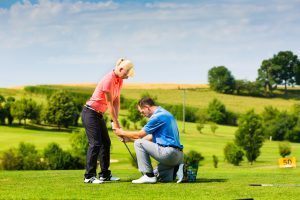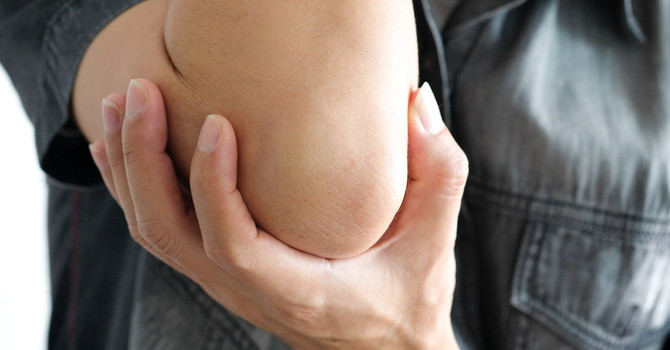
In May of 2017 Bob, who is a Boca Raton golf teaching professional hurt his low back significantly doing some yard work around his house. The low back pain was not only hampering his daily routine, but he was struggling to perform his job as the golf professional. His job working with golfers requires physical activity and demonstrating the golf swing. He was concerned that not only have to suffer from the pain, he would also be unable to work.
Bob knew he had to find a quick solution to his low back pain before it worsened or caused him to miss teaching lessons with his golfers. He had visited our office in the past for his shoulder pain, so he knew he could schedule the same day appointment to see us for examination and treatment.
As a Chiropractor and Titleist Performance Institute Certified Medical Provider, I ran Bob through a comprehensive low back evaluation. Upon our evaluation, we noticed the following findings regarding his low back condition.
- Spasm of the low back musculature in the low back.
- Antalgic (altered posture) positioning to the right
- No neurological findings or red flags associated with disc injury
- Increase mid-back curvature and lack of mid-back mobility
- Full strength in all extremities
- Significant pain when assessing the right side of his low back muscles.
Functional Testing
Here is a short video of three functional tests we performed on Bob, and we worked on correcting them. The pelvis and low back are instrumental in the golf swing, and many people struggle with these three torso/pelvic movements.
After evaluating Bob, we discussed our findings and the prognosis of his condition and ability to get back to teaching Golf.
We first addressed some of Bob’s concerns which were his desire not to take medications and how quickly can we get him out of pain and functioning fully.
In his years in the golf industry, he has known many golfers who have missed significant weeks and even months of golf with low back pain. He expressed to me that he couldn’t afford to miss that much time from work and was tired of dealing with the constant pain.
When the lower back finally does break down, you can typically expect one of the following conditions to occur:
After evaluating Bob, we discussed our findings and the prognosis of his condition and ability to get back to teaching Golf. We first addressed some of Bob’s concerns which were his desire not to take medications and how quickly can we get him out of pain and functioning fully. In his years in the golf industry, he has known many golfers who have missed significant weeks and even months of golf with low back pain. He expressed to me that he couldn’t afford to miss that much time from work and was tired of dealing with the constant pain.
When the lower back finally does break down, you can typically expect one of the following conditions to occur:
From the Mytpi.com article
- Muscle Strain or Ligamentous Sprain – A muscle strain or “pulled a muscle” as well as an injured ligament will usually resolve itself in 2-4 weeks with plain old rest and recovery. However, there can be some residual muscle stiffness, fascial restrictions, joint fixations or movement alterations that may need to be addressed afterward. Sprains or strains are the most common form of lower back injury we see. Symptoms may range from a minor ache to sharp debilitating pain. Most sprains and strains are localized in the lower back region, meaning pain does not radiate into the butt or leg. The chemical inflammation around the injury is usually sore to the touch, and the pain usually subsides with rest.
- Disc Injury – The lumbar intervertebral disc acts as a spacer between adjacent vertebrae to help absorb compressive forces and create space for the spinal nerves to exit the spinal column. Imagine the disc as a jelly filled donut. If excessive or abnormal stressors are placed on the disc, tears can occur. When this happens, the force of the jelly against that tear can cause a bulge in a portion of the donut leading to a “bulged disc.” In more severe cases, the jelly can actually exit through the donut wall leading to a “ruptured disc.” The discs are also susceptible to degenerative changes over time. To continue the analogy, imagine the jelly inside of the donut drying up. Any of these disc problems can leave the spinal nerves vulnerable to irritation or compression resulting in dysfunction and pain. Most disc pathologies create radiating pain into the buttocks or the leg (think sciatica) due to the irritation of spinal nerves. Sitting for prolonged periods of time, bending forward into a slouched position, or lifting heavy objects can all exacerbate disc symptoms.
- Altered Joint Mechanics or Motor Control – Interestingly, the brain can completely change the lumbar spine’s ability to move just by changing which muscles are firing or by altering the sequence of when muscles fire. This can occur in the absence of any visible injury. These altered motor control or joint mechanics can begin as a protective mechanism, but can lead to chronic problems over time. Most experts believe over 80% of all chronic lower back problems begin this way.
- Degenerative Arthritis – Just like all joints, with over-use, abuse, or even lack of use, spinal joints can become arthritic. Bone spurs and osteophytes act like stalactites and stalagmites inside a cave closing in on the opening for the spinal nerves. With time, these bony outgrowths can fuse joints, irritate nerves and create general inflammation in the area. Stenosis, the narrowing of the canal or cave that houses the spinal nerves is a very common problem with arthritic changes. Most arthritic problems in the spine create sharp pain with certain movements. The resulting inflammation can then cause chronic dull pain over time.
- Bone Fracture – Stress fractures and pedicle fractures (spondylolysis) are common problems seen in the lumbar spines of rotational athletes. This occurs due to the rapid extension and rotation of the spine, causing adjacent vertebrae to collide into each other at their end range of motion. This action places high forces on the posterior portions of the vertebrae and can lead to these types of fractures. Injuries of this sort can lead to deep dull pain and instability in the spine.
The rest of this article can be found at:
http://www.mytpi.com/articles/health/the_golfer’s_guide_to_lower_back_pain_part_1
I discussed with Bob our treatment plan and that we could achieve the results he desired with conservative Chiropractic, Active Release Technique, and rehab exercises specific to his low back. I explained to him that we could accomplish these results in a short period. Based on our findings and experience with this condition, we set a goal of 1 week to where he could get back to teaching golf, and in 2 weeks he would presumably be pain-free. We also discussed a potentially longer time frame to where he would have full function and strengthening of his low back. Most of that strengthening work would be done as part of his at-home care program.
We provided Bob with four low back exercises (examples of 2 of them are videos below).
Another key aspect of injury prevention we needed to implement for Bob, was a proper golf specific warm-up he could do at the driving range. We sent him this short and easy to perform warm-up that only requires a golf club and doesn’t include you having to lay on the ground.
By adhering to our treatment plan, implementing the At-Home Care, and proper warm-ups, Bob was able to return to golf teaching and playing relatively pain-free after a few days and then was fully functional and pain-free after a few short weeks. He didn’t have to see any other specialists or take any medications.
Once Bob was fully healthy, he still fully abided by his core stability and other corrective exercises to help fend off any recurrence of the pain.
Below is the kind Google Review Bob left us after his experience at our clinic.
“I’ve been the Director of Golf and Instruction at Boca Raton Municipal Golf Course for nearly 30 years. During my tenure there I have been treated by Health-Fit Chiropractic a multitude of times and I have sent countless students to them as well.
I believe in cures, maintenance, and prevention. You will find all three of these here. They have treated many of my students using ART (Active Release Technique) and exercise programs with great results.”
There are many causes of low back pain from golf and addressing those will go a long way for optimal performance and injury prevention. Some of the key aspects of injury prevention include:
- Proper Technique
- Flexibility/Mobility
- Core Stability
- Optimal Functional Movement
- Properly fitted equipment
- Warm-up before practice and play
- Full Recovery from the previous injury
- Proper Posture
With that said, golf is a physically demanding and highly repetitive sport. Even golfers who optimize all of the above may fall victim to the dreaded golf injury. However, if you address the above, you will have less injury frequency, severity and recovery time. We can help you get there!



